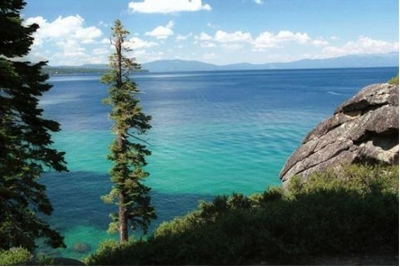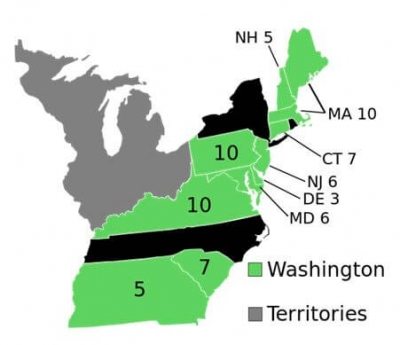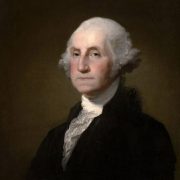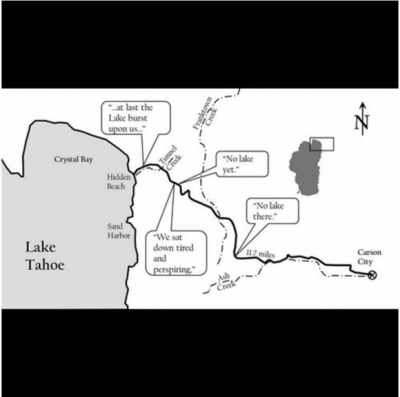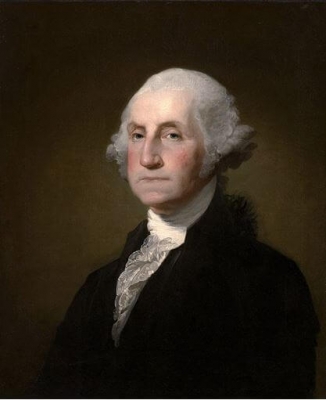The First Presidential Election
I was sitting in front of the fire reading research at my waterfront estate at Lake Tahoe when the phone rang.
The Secret Service was calling from Reno, Nevada asking if I wouldn?t mind guiding someone on a hike in the High Sierras.
?Who, pray tell, was coming?? I asked.
?Sorry, need to know? was the predictable reply. I would find out when the event came off.
The next morning six black GM Suburbans with tinted windows drove through my front gate.
A minute later, I was introduced to Annie Kaine, wife of Tim Kaine, the vice presidential candidate with Hillary Clinton.
Annie is a native of Virginia and a Harvard Law grad, who put in time as a civil rights worker, and later as a judge in her home state. She was the First Lady of Virginia from 2006-2010.
Annie had never visited the Sierras before, but had long known of their beauty. While her husband was campaigning in nearby Reno, she took the day off to check off an item on her bucket list.
I guided Annie up the Incline Village Flume Trail, one of my favorites, to the Tahoe Rim Trail at 8,500 feet. We paused to stop at the place where Mark Twain first caught sight of the crystal clear lake.
A half dozen Secret Service agents, in their thirties and in incredible shape, followed at a respectful 50- foot distance, periodically providing radio updates to an unknown supervisor.
No pictures were allowed.
I related the local history and mentioned that my ancestors had ties to Virginia?s Tidewater area before they moved on the Kentucky, Missouri, and ultimately, California.
Then I launched into a long discussion of presidential politics, not the current race, but the first one.
I remember the first presidential election like it was yesterday.
Back in 1788, George Washington was so popular that he ran unopposed. Then the battle was for the vice presidency which was elected separately.
Our current electoral system did not come into place until the passage of the 12th amendment in 1802.
John Adams won handily, a flinty attorney from Massachusetts, edging out John Hancock and John Jay.
Adams helped write the Declaration of Independence and the Constitution, obtained crucial loans from the Dutch during the Revolutionary War and negotiated the peace treaty with Britain.
Adams favored a strong central government. He went on to be elected the second president in 1797.
Political parties did not yet exist, nor did opinion polls or focus groups. ?Candidates were either Federalists or anti Federalists, being for or against the constitution. The Federalists won with a 90.5% margin.
There was no single election day. Instead, voting stretched over a month, from December 15 to January 10.
This was so voters could walk or ride a horse long distances to get to the polls. Since government was new, there were few roads or bridges to cross rain-swollen streams and rivers.
The weather on the east coast is often frigid and snowy that time of the year. Candidates would greet voters with a side of beef roasting on an open spit and a cup of spiced rum. Drunkenness at the polls was a common problem.
Only white men of property could vote, limiting the turnout to only 1.3% of the country?s 3 million population.
Virginia was the political powerhouse of the day, with 12 of 95 votes in the Electoral College. The state then was much larger, and included the lands that later became West Virginia and Kentucky.
Virginia?s political impact was further increased because it was given additional seats in the House of Representatives equivalent to three fifths of its substantial slave population. This practice continued until the Civil War.
Only ten of 13 states voted because New York, North Carolina, and Pennsylvania had not yet ratified the constitution. Only six states allowed any popular voting at all, relying on their electors to make the choice.
A lot has changed since the first presidential election 228 years ago.
Since then, the numbers of eligible voters has steadily expanded.
African American men won the right to vote with the passage of the 15th Amendment in 1870, but they didn?t get full voter?s rights until the Voting Rights Act became law in 1965.
Women achieved the right to vote with the 19th Amendment in 1920. The voting age was lowered to include 18 year olds with the 26th Amendment in 1971 (that one I really DO remember, and I voted in 1972).
I?m keeping the letter short today so everyone has plenty of time to get out there and vote. So get out there and do it. It?s a privilege and a right, so use it.
I told Annie Kaine to come back any time she wanted, and next time, bring her husband and her skis. She said she would love to, as long as I didn?t mind a larger Secret Service detail.
I replied that I didn?t mind at all.
